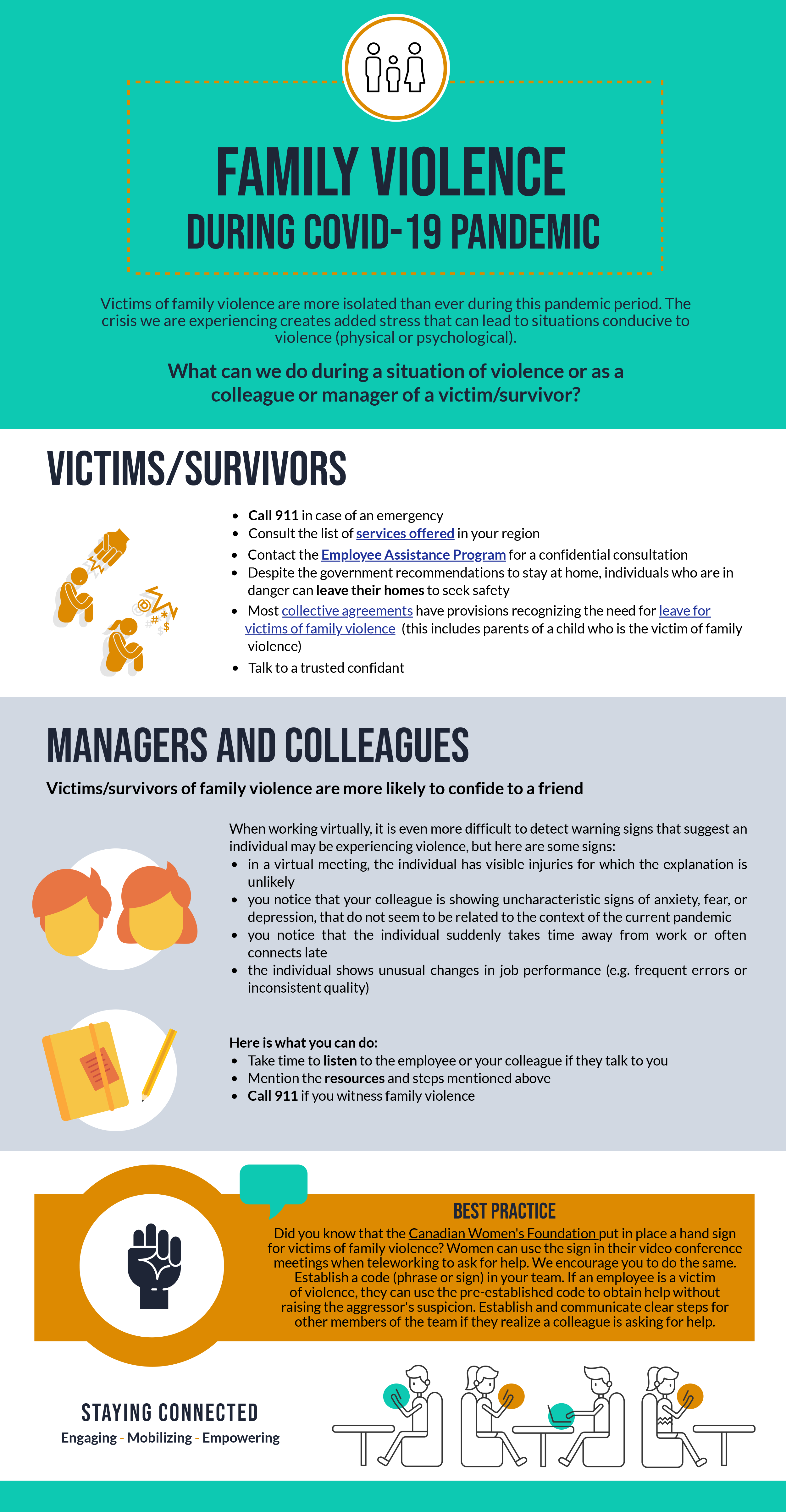Family Violence during COVID-19 Pandemic
Long Description
Family Violence during COVID-19 Pandemic
Victims of family violence are more isolated than ever during this pandemic period. The crisis we are experiencing creates added stress that can lead to situations conducive to violence (physical or psychological).
What can we do during a situation of violence or as a colleague and manager of a victim/survivor?
Victims
- Call 911 in case of an emergency
- Consult the list of services offered in your region
- Contact the Employee Assistance Program for a confidential consultation
- Despite the government recommendations to stay home, individuals who are in danger can leave their homes to seek safety
- Most collective agreements have provisions recognizing the need for a leave for victims of family violence (this includes parents of a child who is the victim of family violence
- Talk to a trusted confidant
Managers and Colleagues
Victims/survivors of family violence are more likely to confide to a friend
When working virtually, it is even more difficult to detect warning signs that suggest an individual may be experiencing violence, but here are some signs:
- in a virtual meeting, the individual has visible injuries for which the explanation is unlikely
- you notice that your colleague is showing uncharacteristic signs of anxiety, fear, or depression, that do not seem to be related to the context of the current pandemic
- you notice that the individual suddenly takes time away from work or often connects late
- the individual shows unusual changes in job performance (e.g. frequent errors or inconsistent quality)
Here is what you can do:
- Take time to listen to the employee or your colleague if they talk to you
- Mention the resources and steps mentioned above
- Call 911 if you witness family violence
Best Practice
Did you know that the Canadian Women's Foundation put in place a hand sign for victims of family violence? Women can use the sign in their video conference meetings when teleworking to ask for help. We encourage you to do the same. Establish a code (phrase or sign) in your team. If an employee is a victim of violence, they can use the pre-established code to obtain help without raising the aggressor's suspicion. Establish and communicate clear steps for other members of the team if they realize a colleague is asking for help.
STAYING CONNECTED Engaging – Mobilizing – Empowering
